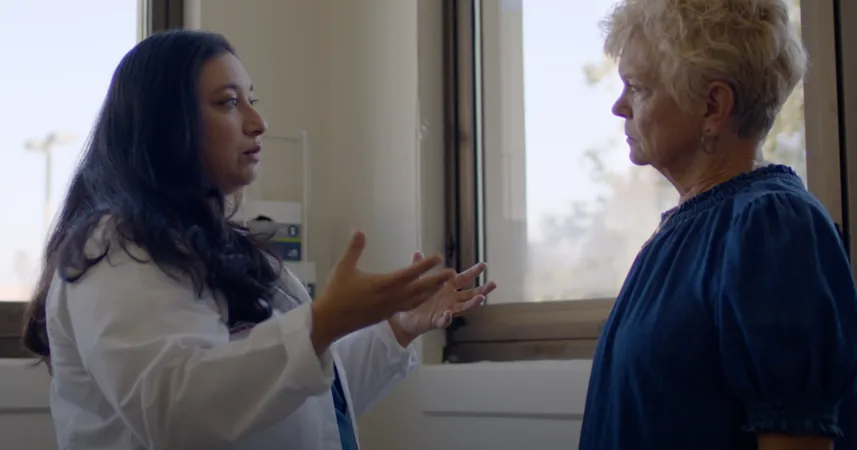
Uncovering Your Treatment Options After a Breast Cancer Diagnosis: What You Need to Know!
2024-10-08
Author: Daniel
Breast cancer, a daunting challenge that affects millions worldwide, has seen significant advancements in treatment options over the years. Patients today can access a spectrum of cutting-edge therapies that cater to their individual needs, particularly at institutions like Loma Linda University Health. Dr. Halley Vora, the director of Breast Health Services, sheds light on the main treatment options available, which encompass surgical, medical, and radiation oncology.
Surgical Options: What You Should Consider
For many breast cancer patients, surgery is typically the first step in their treatment journey. The choice of surgical procedure often hinges on factors such as the cancer's stage and size, as well as patient preferences. Here’s a quick breakdown of the common surgical options:
- **Lumpectomy**: This breast-conserving surgery involves removing only the cancerous tissue while retaining the majority of the breast. For patients with early-stage cancers, this option, often coupled with radiation therapy, can be just as effective as full mastectomy.
- **Mastectomy**: For those with larger or more aggressive tumors or personal preferences leaning towards complete tissue removal, a mastectomy may be recommended. Loma Linda University Health also offers innovative nipple-sparing mastectomy techniques to enhance cosmetic outcomes post-surgery.
- **Reconstructive Surgery**: Many patients opt for breast reconstruction to restore their breast profile. This procedure can occur simultaneously with mastectomy or at a later date, tailored to the patient's preferences.
It’s crucial for patients to engage in thorough discussions with their medical team about these surgical options to align treatment with their personal goals and health status.
Medical Oncology: The Systemic Approach
Medical oncology emphasizes treatments that circulate through the body, targeting cancer cells directly. Dr. Vora discusses the latest approaches tailored to the molecular nature of each patient's cancer:
- **Chemotherapy**: Often used for aggressive or high-risk cancers, chemotherapy can shrink tumors before surgery (neoadjuvant) or eradicate residual cancer cells afterward (adjuvant). The newest chemotherapy protocols are designed to enhance efficacy while minimizing side effects.
- **Hormone Therapy**: For hormone receptor-positive cancers, medications like tamoxifen or aromatase inhibitors block estrogen from fueling cancer growth. This treatment usually spans several years post-surgery to lower recurrence risk.
- **Targeted Therapies**: These treatments focus specifically on breast cancers exhibiting the HER2 protein, leading to improved outcomes for those with HER2-positive tumors.
Additionally, Dr. Vora encourages patients to look into genetic testing, as it can reveal potential benefits from targeted therapies tailored to their unique tumor characteristics.
Radiation Oncology: Crucial for Many
Radiation therapy remains a vital part of breast cancer management, especially for those who have undergone lumpectomies or are at increased risk for recurrence.
- **Traditional Radiation Therapy**: Following lumpectomy, radiation is often applied to the entire breast to eliminate any lingering microscopic cancer cells, utilizing advanced technologies for precision targeting to protect healthy tissues.
- **Proton Therapy**: A groundbreaking option available at the Cancer Center, proton therapy provides targeted radiation delivery, significantly reducing risks associated with traditional therapies, primarily for patients with left-sided breast cancer. This advanced treatment is designed to protect the heart and lungs while effectively addressing cancer cells.
Dr. Vora emphasizes that the aim of radiation therapy extends beyond improving survival; it seeks to enhance patients' quality of life by minimizing side effects. Each patient is meticulously evaluated to determine the ideal radiation strategy for their situation.
Collaborative Care: Your Best Defense
The multidisciplinary team at Loma Linda University Health works closely to ensure every patient receives personalized and comprehensive care tailored to their needs. Dr. Vora encourages all women to take proactive steps in monitoring their breast health, advocating for their needs, and fully exploring all available treatment options.
Understanding your treatment journey is crucial, and armed with this knowledge, patients can take definitive steps toward effective breast cancer management! Don't let fear dictate your choices—empower yourself with information and consult your healthcare provider about your best path forward.




 Brasil (PT)
Brasil (PT)
 Canada (EN)
Canada (EN)
 Chile (ES)
Chile (ES)
 España (ES)
España (ES)
 France (FR)
France (FR)
 Hong Kong (EN)
Hong Kong (EN)
 Italia (IT)
Italia (IT)
 日本 (JA)
日本 (JA)
 Magyarország (HU)
Magyarország (HU)
 Norge (NO)
Norge (NO)
 Polska (PL)
Polska (PL)
 Schweiz (DE)
Schweiz (DE)
 Singapore (EN)
Singapore (EN)
 Sverige (SV)
Sverige (SV)
 Suomi (FI)
Suomi (FI)
 Türkiye (TR)
Türkiye (TR)